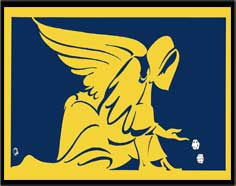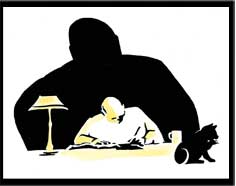Freeman was best known as the state’s most successful SP (illegal) bookmaker, but his interests and influence were far more extensive. He was close friends with crime bosses Lennie McPherson and Stanley Smith, and with them played a leading role in organised crime in Sydney for some 20 years before his death in 1990. He combined McPherson’s ability to stand over other businesses with Abe Saffron’s capacity to run his own very successful business.
The young Freeman was a shoplifter and keen gambler when he met McPherson in Long Bay gaol in the 1950s. McPherson introduced him to his friends, and Freeman began the first of many SP businesses. He later took advantage of the spread of telephones to operate a large-scale phone-betting business. According to Clive Small and Tom Gilling in Smack Express, by the mid-1970s “At his office in Rockdale, half a dozen people gathered insider information and worked the telephones, placing and laying off bets and setting odds on races with around 20 ‘agencies’ scattered across Sydney. Each agency operated its own telephone networks.”
Despite constant claims to the contrary, Freeman was a man of violence both personally and in business. He built up his betting empire by forcing once independent SP operators to join it, or by replacing them. Like most people in his profession he pursued debts with determination. One of his collectors was reputed to use a tomahawk to remove fingers from recalcitrant debtors.
The profits to be made from SP bookmaking were enormous. In 1983 a Victorian inquiry into gambling estimated the annual turnover of SP bookmaking in New South Wales was $1,800 million. In 1978 Freeman bought a waterfront mansion called Dallas at Yowie Bay from casino boss Bruce Galea, son of Perce. Its large grounds were fortified with high walls and cameras, and patrolled by large dogs. When Freeman sold Dallas in 1987, he moved to a large home on Gymea Bay and bought a rural retreat with acreage near Bowral.
Freeman was a great corrupter of police, from whom he had little trouble after 1968. He noted, “The more crime you commit the more crooked cops you attract – they’re never too far away to miss out on their part of the action.” Former honest policeman Geoff Schuberg has recalled that superior officers had to be notified in advance of any raid on Freeman’s premises, and Freeman would move the day before the raid. Another honest cop, Merv Beck, had the job of raiding Freeman’s casinos in 1979. “We raided quite a few of George’s places,” Beck recalled. “But of course he was never there. He would distance himself from his operations – he was always about three or four people away. Whenever we arrested anyone who worked for him they would never give him up. No one wanted to talk, he ruled by fear. That’s why he got away with everything.”
Freeman also paid some in the judiciary – including Chief Magistrate Murray Farquhar – and possibly in politics. His preferred method was to provide racing tips that had a high level of accuracy because he also fixed races, usually by paying jockeys.

His other main area of activity was illegal casinos, having an interest in some and, with McPherson, standing over others. Like McPherson, Smith and Saffron, he was curious about American organised crime, and friendly with Joe Testa, the Chicago businessman with mob connections. Testa was a guest at Freeman’s house several times, and hosted Freeman and Stan Smith for six weeks in America in 1968. Freeman even established a short-lived development business with Testa in Sydney, not that he had much to learn about construction from the Americans: one of the sidelines of McPherson and himself was “resolving” industrial disputes for local building companies.
As befitted a man in his position, Freeman attended the 1972 crime meetings at Karl Bonnette’s house in Double Bay. One of the jobs of organised crime’s ruling clique was to ensure crime remained hidden. Acts of public violence that drew public and political – and therefore police – attention had to be avoided at all cost. This meant that violent psychopaths, who are naturally drawn to the criminal milieu, had to be dealt with. Freeman is rumoured to have been involved in the shooting of John Regan in 1974 and the disappearance (and presumed death) of Chris Flannery in 1985. According to some accounts, both men were on their way to see Freeman just before they died.
Like many of the men covered in this series, and like many Australians in the twentieth century, Freeman had a passion for racetracks and horses, and for betting on the races of the latter around the former. One of the best known photos in the history of Sydney’s organised crime shows Freeman sitting in a stand at Royal Randwick Racecourse in 1977 with Murray Farquhar (at the time he was chief stipendiary magistrate) and Dr Nick Paltos, a close personal friend and later convicted drug smuggler.
Like Abe Saffron, Freeman sought a degree of social acceptance and on occasion responded publicly to accusations. In 1979 after MP Bruce McDonald had suggested in parliament that Freeman had “unusual and undue influence” over a large squad of detectives, Freeman went to parliament house with a camera crew from a top current affairs program in an unsuccessful attempt to confront the politician.
Freeman liked to dress sharply and published an autobiography in 1988, which was full of pithy opinions although short on details of his recent business activities. He said he disliked drug dealing, but was a pethidine addict for his last years. This might have originated in response to pain suffered following an attempt on his life in 1979. It probably contributed to his death from heart failure due to an asthma attack at the age of 55.

MAIN SOURCES: The Godfather in Australia by Bob Bottom; George Freeman: an autobiography by George Freeman; Smack Express by Clive Small and Tom Gilling; The Prince and the Premier by David Hickie.







You must be logged in to post a comment.